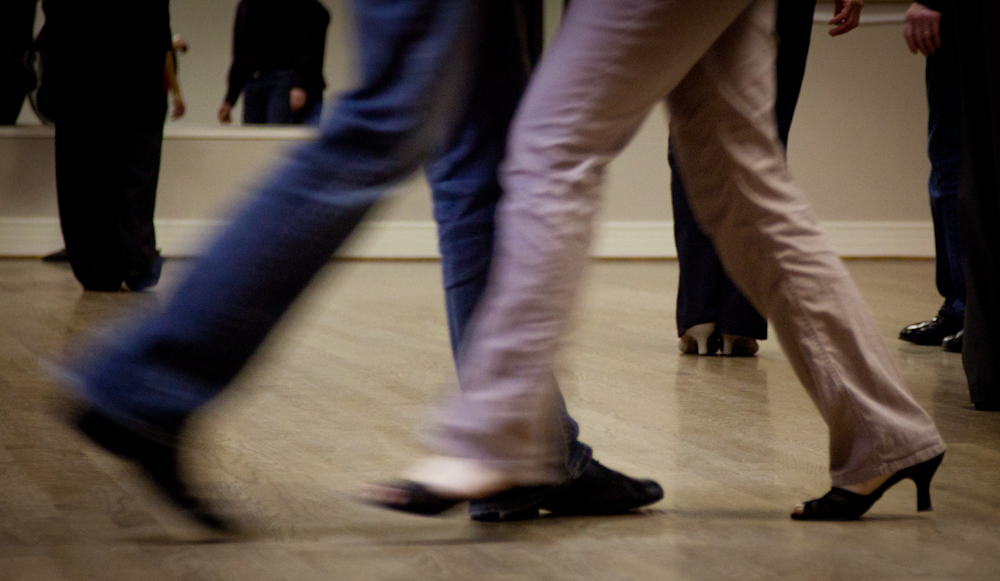Learning to dance isn’t about being taught a bunch of steps. It’s about being completely in synch with another person; it’s a physical dialogue, an expression of passion or play, humour or romance; a celebration. It’s about life…and it’s fun!
That’s what Elaine Carson of Everybody Dance has been teaching people in Vancouver for 32 years. Whether you need to know the Waltz for a special occasion, or just get a thrill from Salsa, Swing or Tango, Elaine has a formula that makes it easy to learn. Through the use of comedy and analogy, she explains how dance components are used as building blocks to create beautiful dancing. Classes are kept small to promote learning, and everyone will feel comfortable in the friendly, social environment.
What sets Everybody Dance apart is that Elaine provides everything a larger school can offer, while never losing the one-on-one personal attention that is the trademark of her small school. Class sizes are kept small to promote learning and allow Elaine to spend more individual time with each student. Optimum class size is 8 – 10 students; the maximum number of participants is 20. When there are more than 10 students, a second instructor will be present to ensure that everyone will still receive individual attention, while permitting the class to continue at a suitable pace.
Elaine offers private and group lessons for teens and adults, dance parties, workshops, opportunities to perform or compete, picnics, barbeques, and even a fitness class. Come on and join the fun! Everybody Dance!
Ballroom Dancing Classes Offered
Instruction is available in both group class or private lesson formats.
→ Click here to check the schedule for upcoming classes
Ballroom Dances:
- Foxtrot
- Tango
- Waltz
- Viennese Waltz
Latin Dances:
- Rumba
- Cha-Cha
- Swing (a.k.a. Jive)
- Mambo / Salsa
- Merengue
- Samba
- Bolero
- West Coast Swing
What is the difference between American Style and International Style?
Literally, the American style is the style of Ballroom dancing which developed in North America, while the International style is that which developed in Europe. While there are creative differences, the technique for both styles remains the same.
In the International Style of Ballroom, the two dancers must remain in body contact at all times, while in the American Style, dancers are permitted to open up for under-arm turns, or to separate to dance side by side, allowing for greater freedom of expression. The “open work” as it is termed, originated with the dancing of Fred Astaire and Ginger Rogers, whose huge popularity placed them as role models who the public wished to copy.
Essentially, the best thing about American Style dancing is that we can do everything the International Style dancers do, plus we have all of the additional creativity of the open work: the best of both worlds! Due to this creative freedom, you will see that the ballroom routines on So You Think You Can Dance and Dancing With The Stars are choreographed in a more American style. (Some American Style dancers you may recognize from these shows are Mary Murphy, Toni Redpath, Tony Dovolani and Elena Grinenko.)
While most dancers may choose American style for their social dancing, because of its greater number of patterns and freedom, competition for all levels in American Style is also an option.

